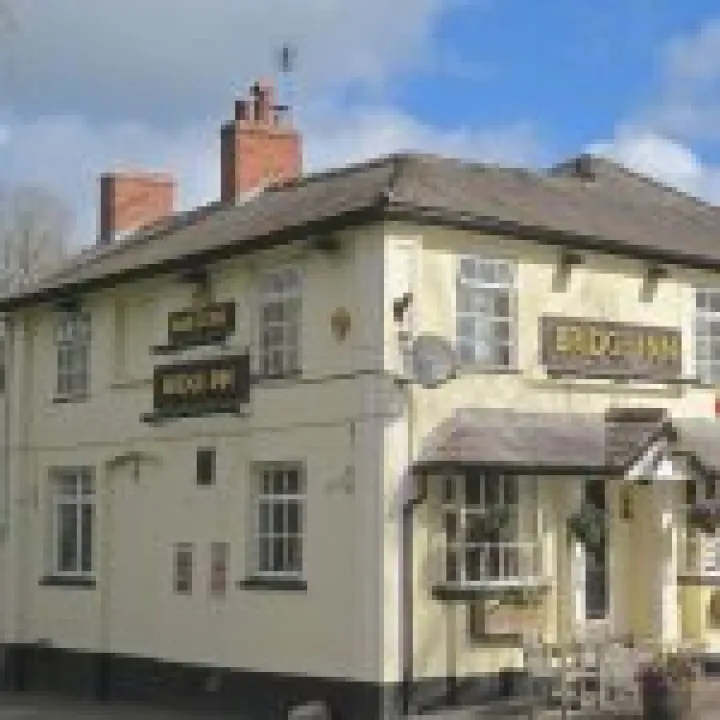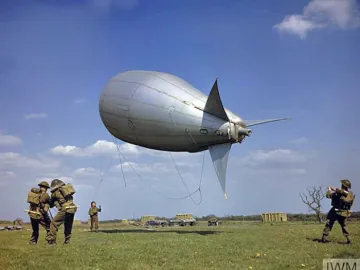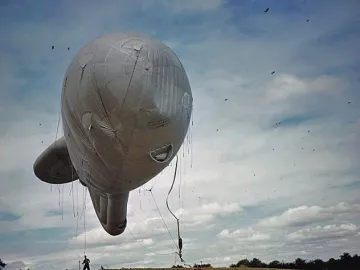







Audlem and District History Society
History Shorts 38 by Judi Paterson
Up, up and away
For a child, moving to a new house in a new area can be both exciting and overwhelming. When my family moved to an area near Filton, on the outskirts of Bristol, in 1950, my big sister and I were keen to explore our surroundings. We discovered a rank of shops just round the corner. The shops fronted a roundabout. In the middle was a large concrete platform, embedded in which was a metal ring.
When we told our parents about our find they explained that it would have been the base for a barrage balloon in the war. As a six year old, the war held little interest for me and I had no idea what a barrage balloon would look like or why it would be necessary to have one in our area.
For what are now obvious reasons our parents didn't go into any details. The war had only ended five years previously and memories were still raw. Over time shrubs on the roundabout covered the concrete until it was no longer visible, and we forgot about it.

My parents lived in the area because my father was an aero engineer, employed in one of the factories which belonged to the Bristol Aeroplane Company. During the war the factories had been an important target for German bombers. Various deterrents had been put in place, our local barrage balloon being one of them.
A barrage balloon can be described as a bag filled with a gas which is lighter than air, usually hydrogen. It is attached to a steel cable anchored to the ground or sometimes to a military vehicle. It is approximately 64 ft/20m long and 25 ft/8m diameter and can be flown up to 5,000 ft/1,500m. In wartime they were used to defend ground targets against aircraft attacks. The steel cables posed a severe threat to enemy aircraft forcing them to fly too high to hit their target and into the range of anti-aircraft fire.
The balloons were mostly 'manned' by women from the Women's Auxiliary Air Force (WAAF). This involved filling them with hydrogen and winching them into position. The balloon needed to face into the wind. If the wind changed direction the balloon had to be hauled round until it was in the correct position. These tasks had to be performed day or night. It was hard physical work.

By the middle of 1940 there were 1,400 balloons, a third of them over the London area. The rest were distributed around the country protecting cities and key targets such as industrial areas and ports. Sometimes several balloons were used to lift a length of 'barrage net', in which a steel cable was strung between the balloons and more cables suspended from it.
Occasionally a balloon would break loose from its mooring. On one occasion returning aircraft reported seeing one flying in a semi-circle 3,000 – 4,000 metres above the centre of Bristol and another at a similar height north of the city in the Filton area.
Had I known all this as a child perhaps I would have asked questions, but I doubt it. Now, on reflection, I am grateful that 'our' balloon was there helping to protect my father and the hundreds of other employees at the Bristol Aeroplane Company.
Get In Touch
AudlemOnline is powered by our active community.
Please send us your news and views using the button below:
Email: editor@audlem.org




